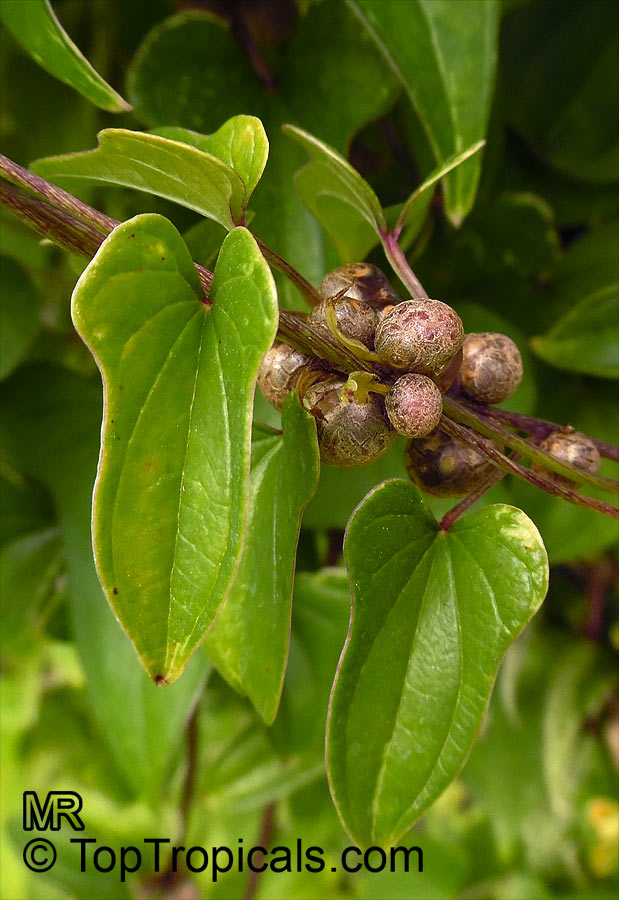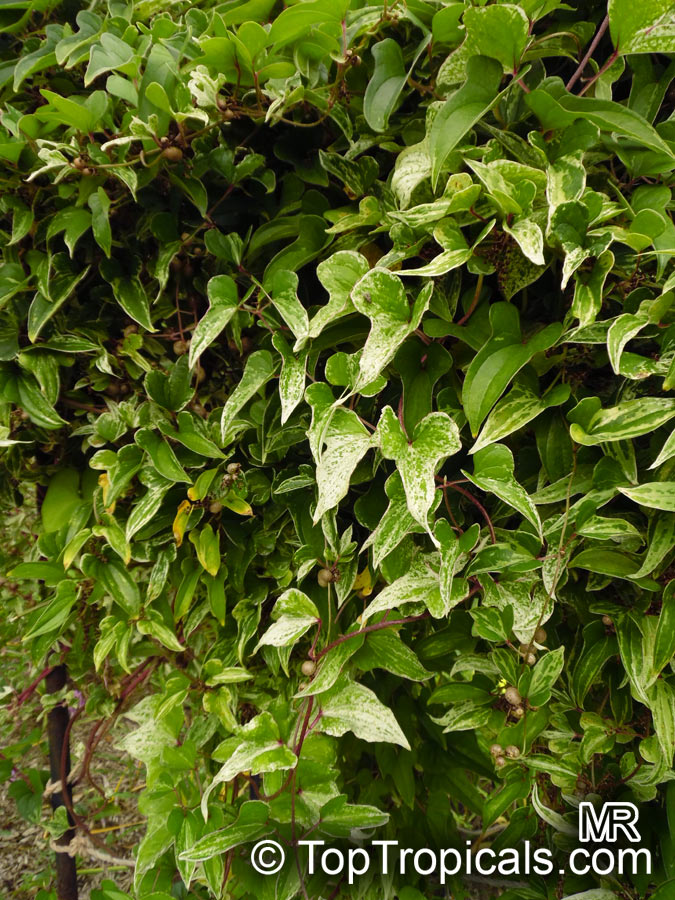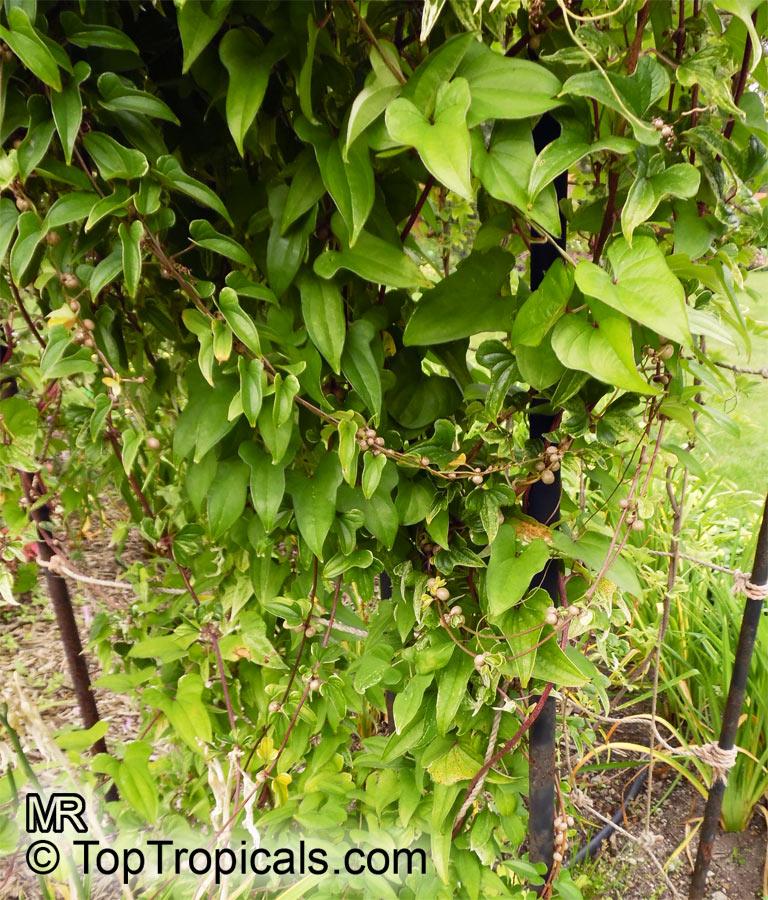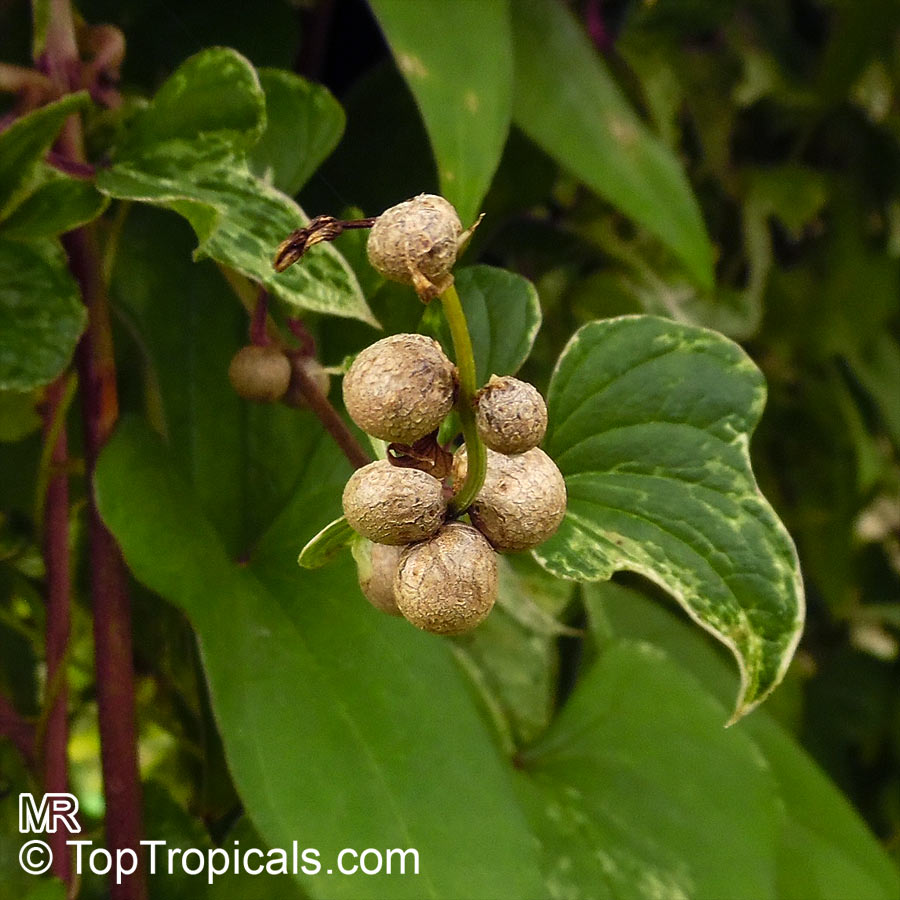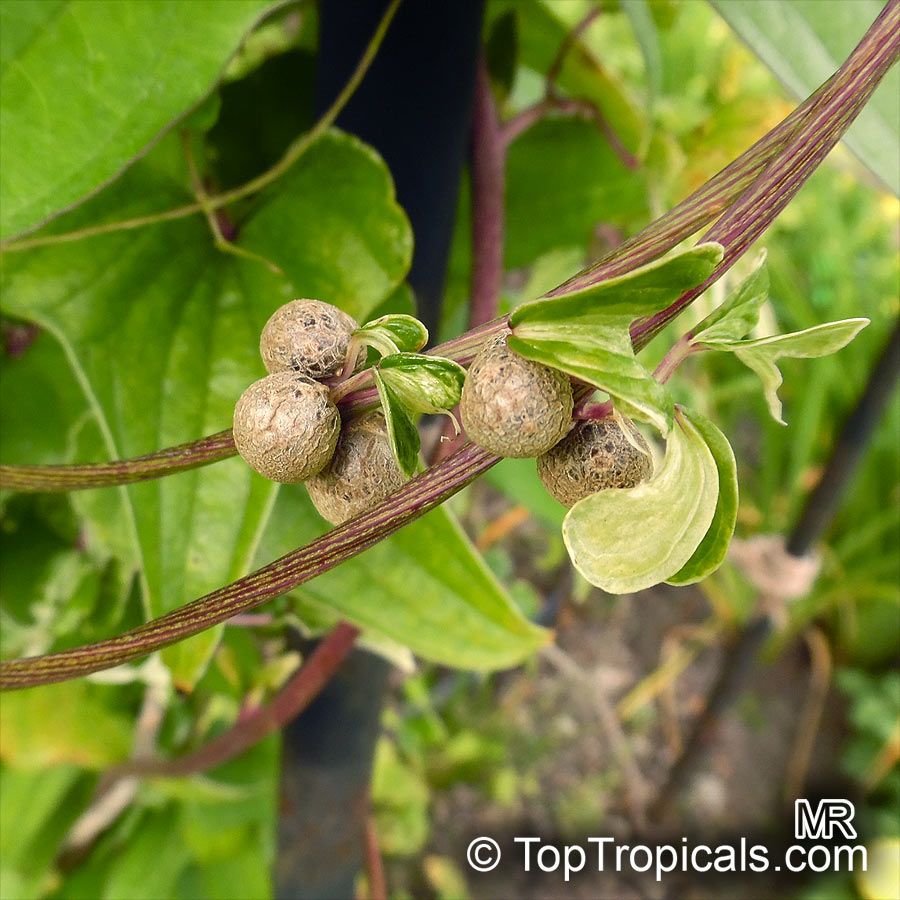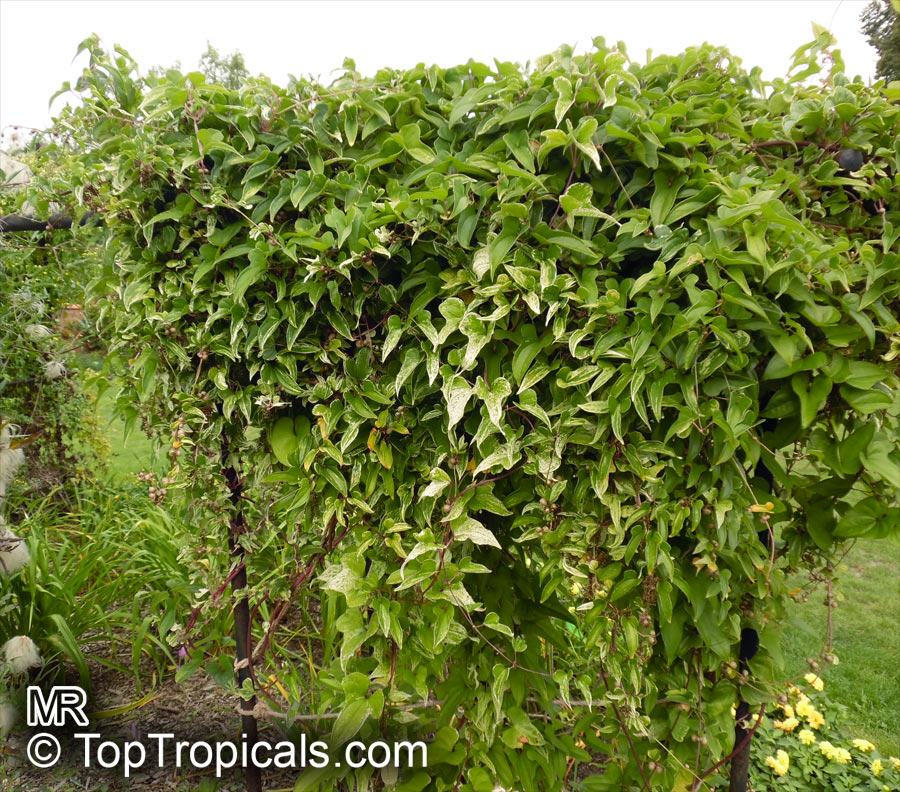Dioscorea polystachya (Chinese Yam)
Top Tropicals Plant Encyclopedia
Botanical names: Dioscorea polystachya, Dioscorea batatas
Common names: Chinese Yam, Cinnamon-vine
Family: Dioscoreaceae
Origin: Eastern Asia









The flowers of Dioscorea polystachya will appear between early July and early September and positively announce the bearing of edible fruit.
Dioscorea polystachya, commonly known as the Chinese Yam, is a perennial vine native to Eastern Asia. It is grown in USDA Zones 9-11 and is considered a vigorous vine, since it can grow up to 20 ft long, with burgundy colored stems and yellow-orange flowers with a sweet and pleasant scent.
It can tolerate full sun, but it needs regular watering. It is also tolerant of moderate amounts of water so does not need to be watered more than once a week.
The Bulbils of the Chinese Yam are also edible. They are an important food source in China and have been documented in Ethnomedical traditions. The fruit of the Chinese Yam is edible and can be eaten raw or cooked, and is known for its many health benefits including reducing inflammation, reducing blood sugar levels, aid digestion, and nourish the lungs and spleen.
The Chinese Yam can produce a large amount of fruit in each season, making it quite a valuable crop. Each season it can produce dozens of fruits ranging in size and shape, which can be harvested when they reach full maturity.
In cold regions where the temperature drops below 30°F, growing the Chinese Yam in a pot may be a better option. In this context, it is essential to have well-draining soil and to water the plant regularly.
